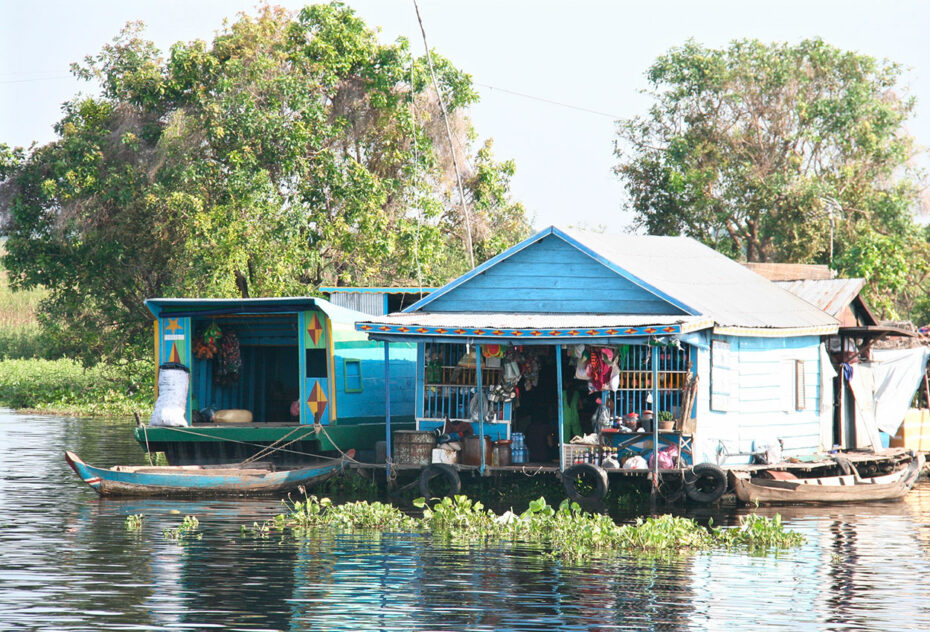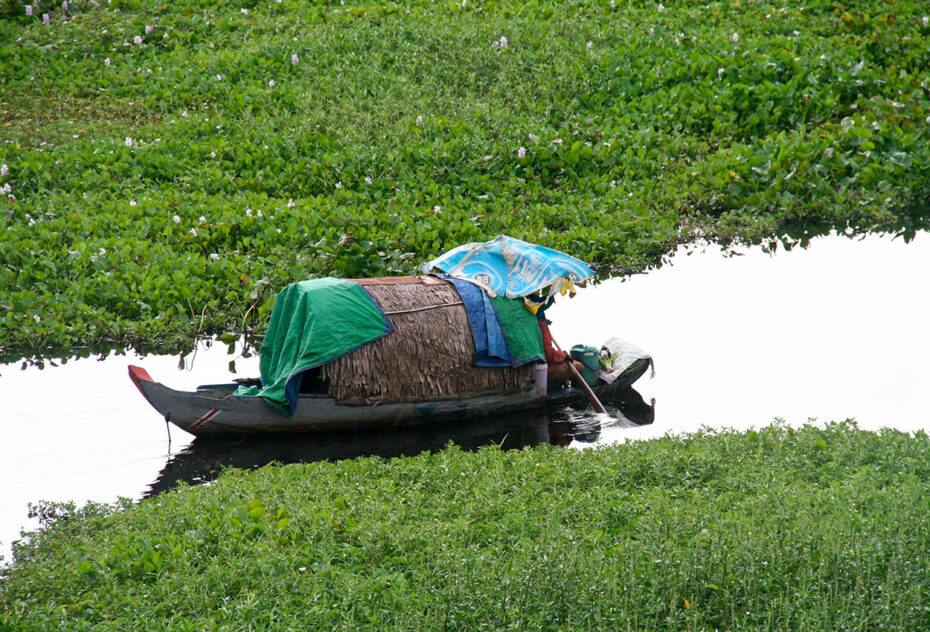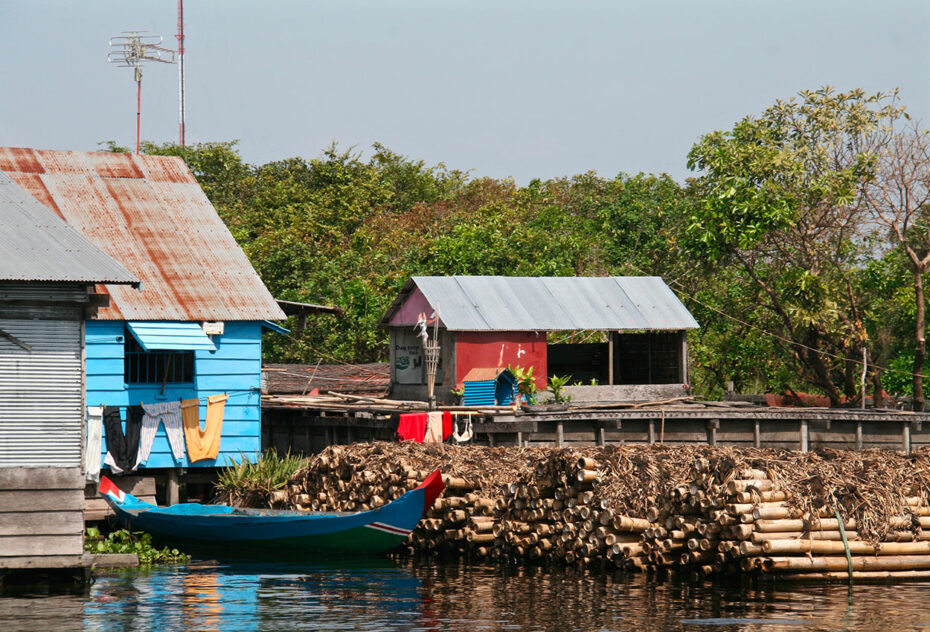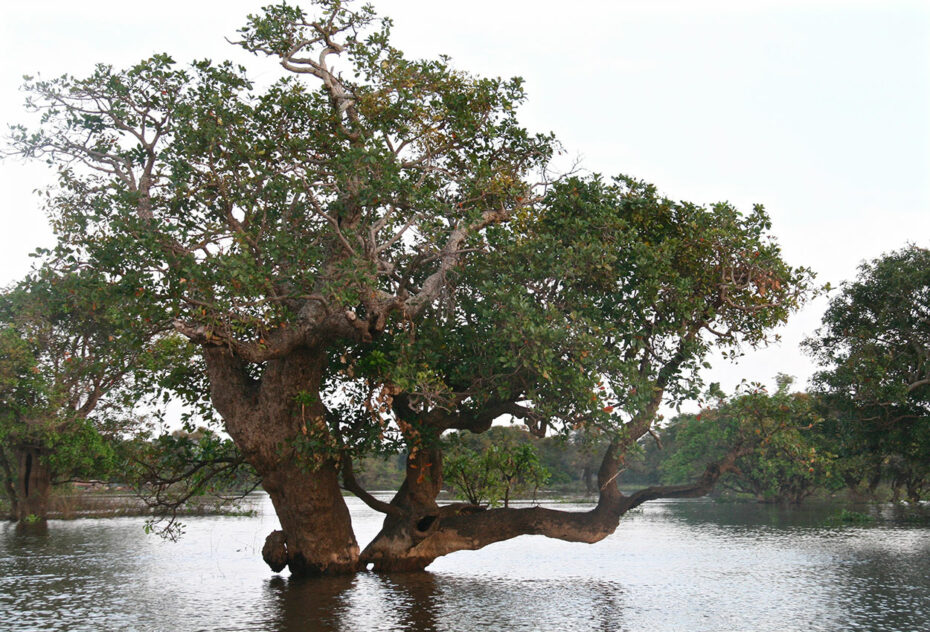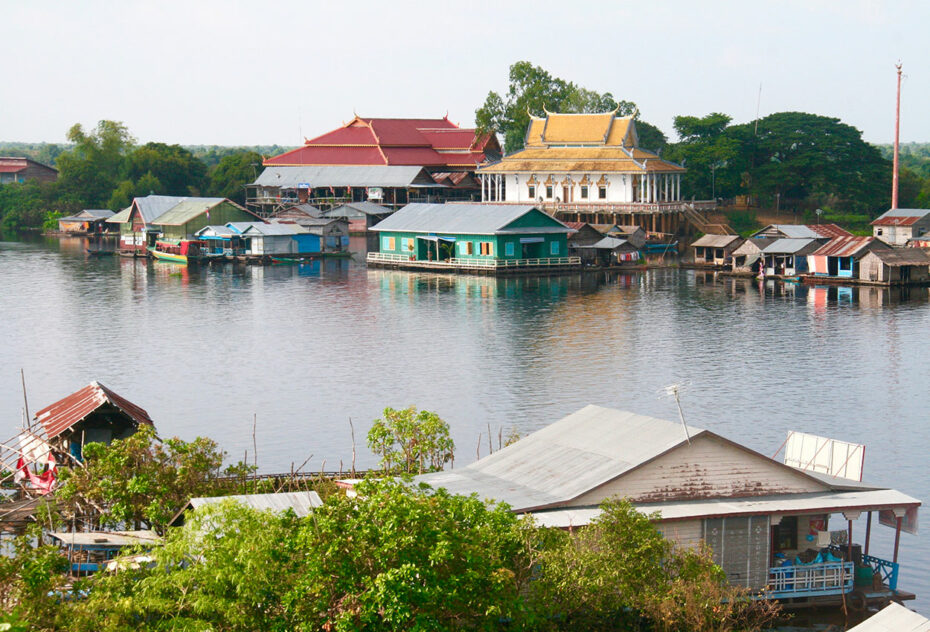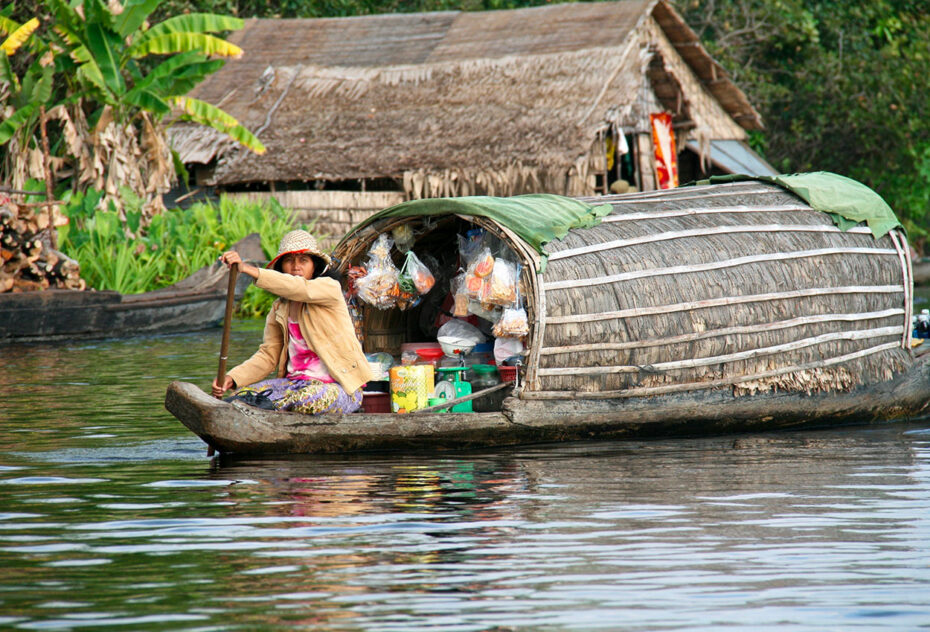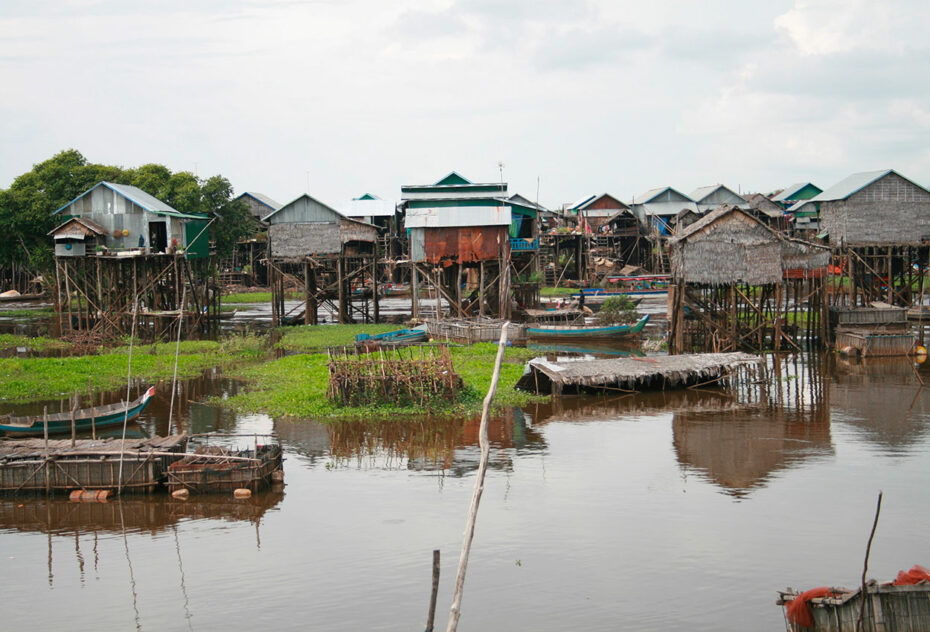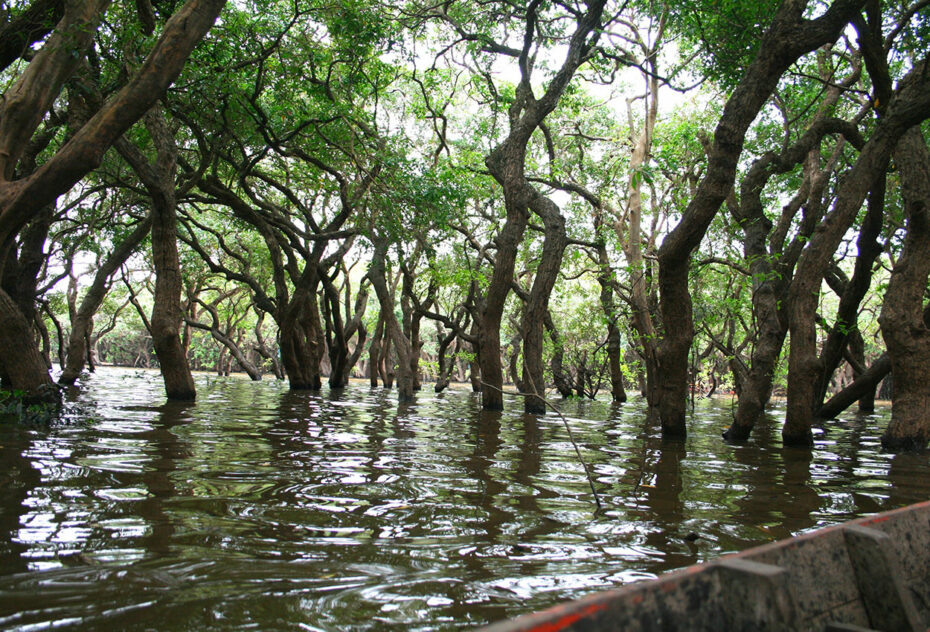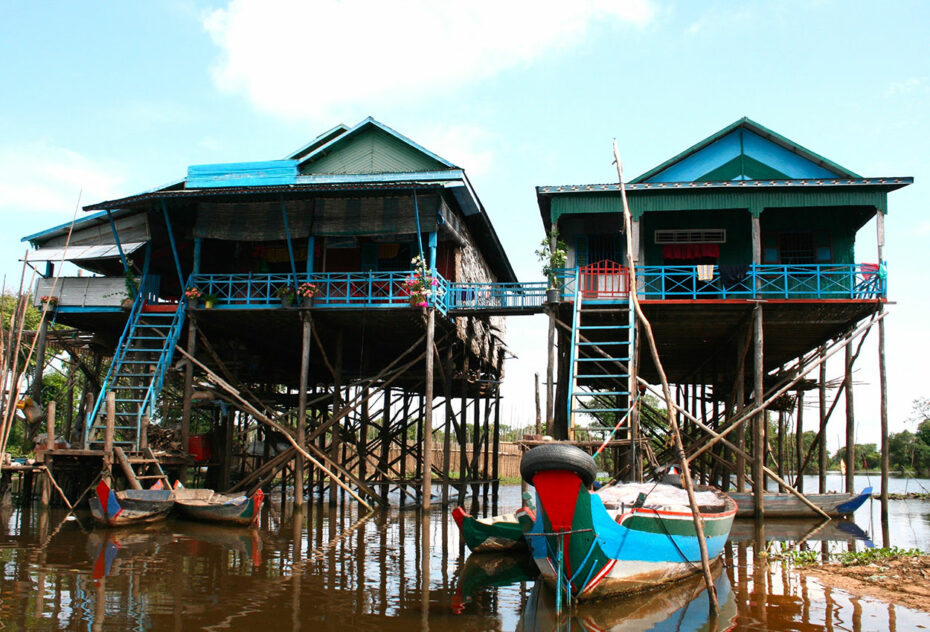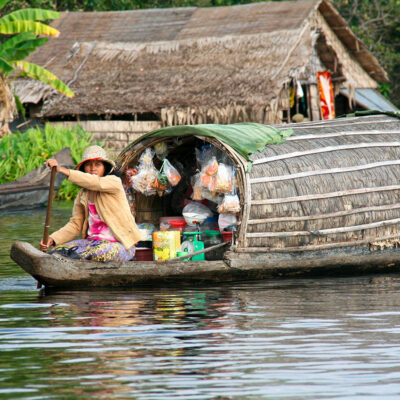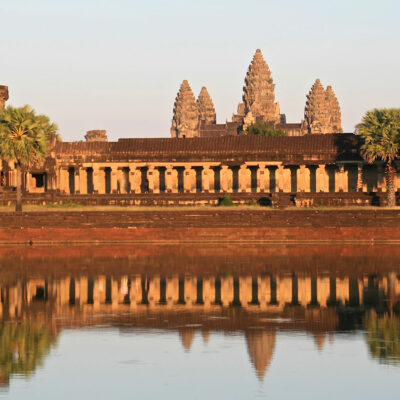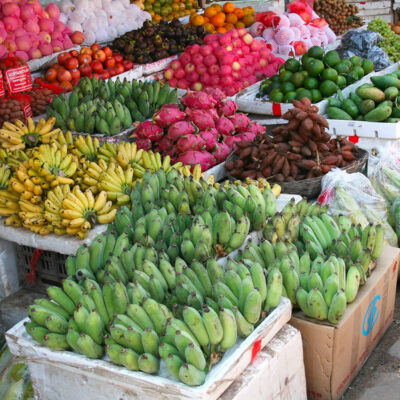
The Tonle Sap, Southeast Asia’s largest freshwater lake, lies in north-central Cambodia, around 15 km south of Siem Reap, in the middle of a rich rice-growing plain. It plays a vital role in the country’s economy, providing fish and irrigation for half the population. It also acts as a regulator of the Mekong River. Every year, during the rainy season, we observe a phenomenon that is unique in the world: the turning of the waters. A 100 km-long channel known as the Tonle Sap River links the lake to the Mekong near Phnom Penh. In June, the pressure of the Mekong’s waters becomes so great that it forces the Tonle Sap River to reverse its course and flow back up towards the lake, transforming it into a veritable inland sea. The lake’s surface area is multiplied by 4 or 5 and its depth rises from 2 m to over 10 m. Long considered magical, this phenomenon gives rise to one of Cambodia’s most important festivals, the three-day Bon Om Tuk (Water Festival).
Around mid-October, when the Mekong begins to recede, the Tonle Sap resumes its normal course, this time carrying the lake’s overflow into the Mekong. As the waters recede, they leave behind rich deposits of alluvium that fertilize the rice paddies, allowing up to 3 harvests a year instead of 2 in the rest of the country. The Tonle Sap is an ideal habitat for birds (pelicans, marabouts, cormorants….), snakes, crocodiles and turtles. It is also one of the world’s richest reserves of freshwater fish. The lake is an important fishing ground: much of the fish is processed into prahok, a fermented fish paste widely consumed in Cambodia.
This unique system is currently under threat from the construction of dams, some already in operation, thousands of kilometers upstream on the Mekong, as well as from deforestation, which reduces the amount of water available to feed it during the rainy season. The Tonle Sap was designated a UNESCO Biosphere Reserve in 1997. The lake is populated by villages on stilts and floating villages that move with the movements of the lake.
Cambodia’s Tonle Sap has been explored on numerous trips since 2008.
Click on the picture to enlarge it and discover its caption.
